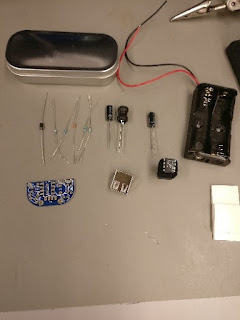Roborace Showcase at MCity

On last Friday, which was May 21st, Roborace visited Mcity in the University of Michigan to show case its autonomous race car, Robocar. Robocar's first impression was astounding. Previous self-driving cars involved regular cars with regular seats. However, this race car was designed so that there is no seat. It looked like Formula 1 race cars with a higher cool factor. To achieve the autonomy, the race car uses a combination of Lidars, Radars, Sonars, and computer vision cameras. Unlike traditional self driving cars which has a roof mounted Lidar, Robo race has a couple of Lidar in the front wheel wells. I wonder the benefits of the side mounted Lidars over top mounted Lidars. I predict that due to its low height, top-mounted Lidar might cause a line of sight issue. As a consequence of side mounted Lidar in the front, the car introduces a blind spot due to large back wheel wells. Therefore, the back wheel is mounted with Sonars to compensate. In the top of the car seats the c


